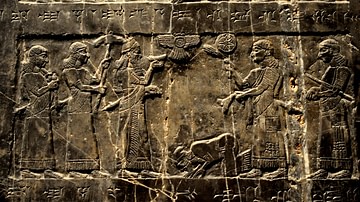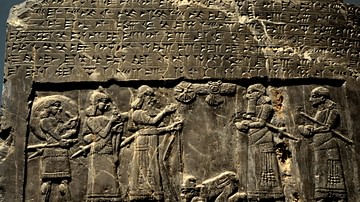Illustration
In the centre of this image is the so-called Kurba'il statue of Shalmaneser III (reigned 858-824 BCE), which was found in Fort Shalmaneser in 1961 CE by the British School of Archaeology in Iraq. The statue originally stood in the Temple of Adad at the city of Kurba'il, north of modern-day Mosul, but it was probably brought in antiquity to Fort Shalmaneser for repair, where it was found. The statue's cuneiform inscriptions mention the first 20 military campaigns of the king. Somewhere between April 10 to 12, 2003 CE, this statue was looted from the Iraq Museum. It was retrieved in the following weeks, in 4 fragments (head, and 3 body parts).
The statue on the right also belongs to Shalmaneser III and was found by a peasant accidentally in the early spring of 1956. It was badly fragmented at the south-east corner of Nimrud city wall, at the foot of the acropolis. The statue's cuneiform inscriptions mention the king's 21st and 22nd military campaigns.
On the left, the vibrant glazed wall panel from Fort Shalmaneser appears.
All date back to the reign of Shalmaneser III and are on display at the Assyrian Gallery of the Iraq Museum in Baghdad, Republic of Iraq.
About the Author
Cite This Work
APA Style
Amin, O. S. M. (2019, March 21). Two Statues of Shalmaneser III at the Iraq Museum. World History Encyclopedia. Retrieved from https://www.worldhistory.org/image/10283/two-statues-of-shalmaneser-iii-at-the-iraq-museum/
Chicago Style
Amin, Osama Shukir Muhammed. "Two Statues of Shalmaneser III at the Iraq Museum." World History Encyclopedia. Last modified March 21, 2019. https://www.worldhistory.org/image/10283/two-statues-of-shalmaneser-iii-at-the-iraq-museum/.
MLA Style
Amin, Osama Shukir Muhammed. "Two Statues of Shalmaneser III at the Iraq Museum." World History Encyclopedia. World History Encyclopedia, 21 Mar 2019. Web. 13 Apr 2025.



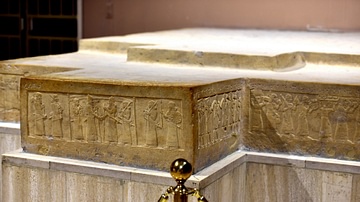
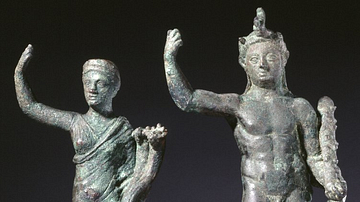
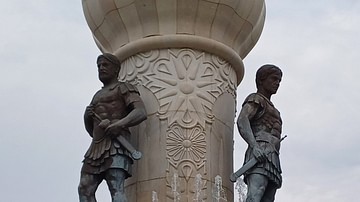
![Throne Dais of Shalmaneser III [Front Panel]](https://www.worldhistory.org/img/c/p/360x202/10526.jpg?v=1733660592)
